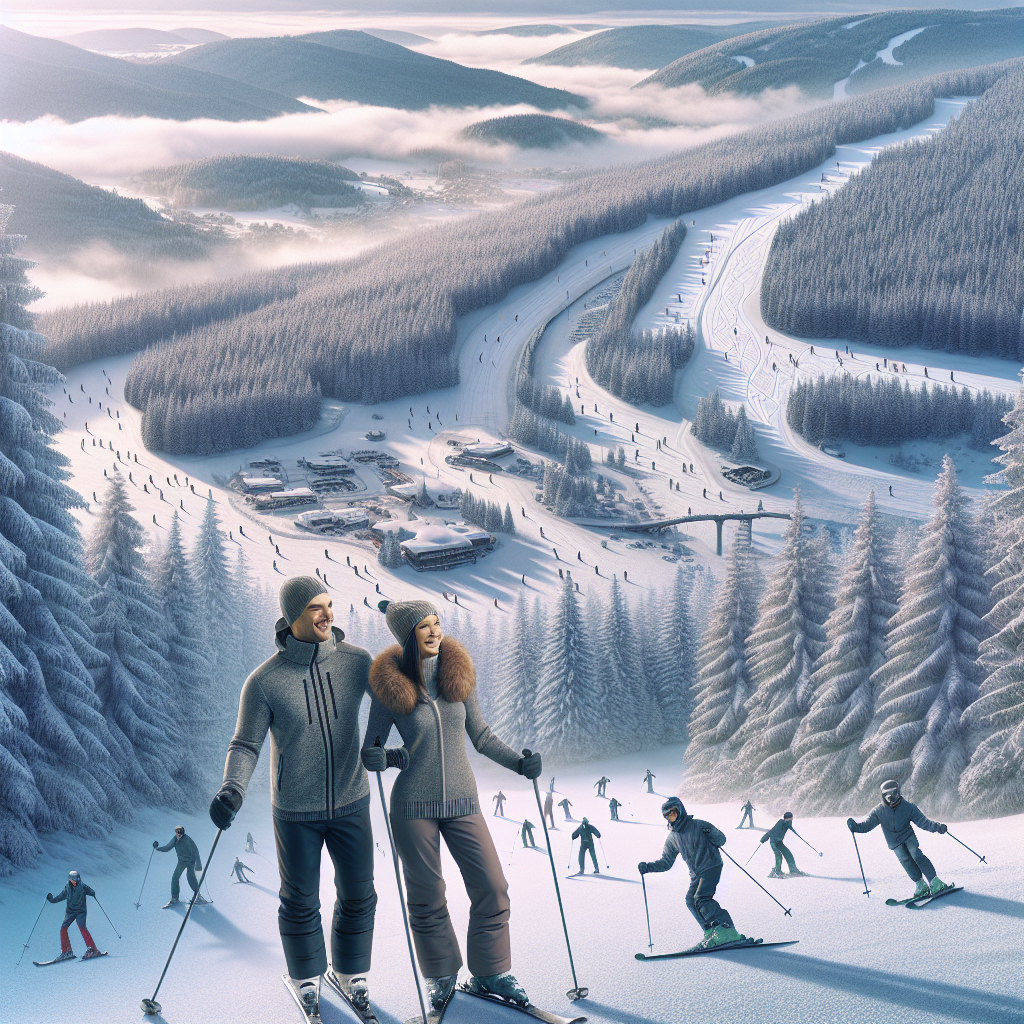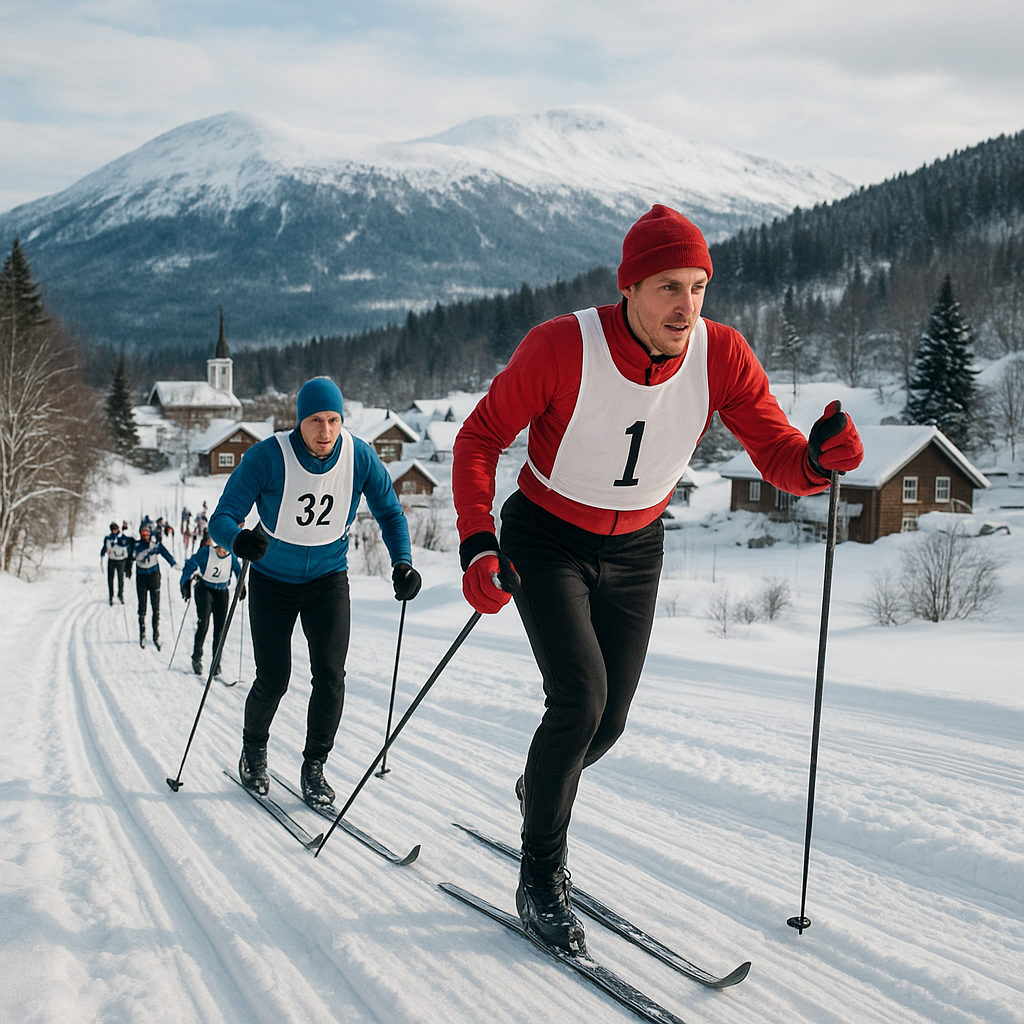
Planning a ski trip to Norway is an exciting adventure that requires proper preparation and training. Norway, known for its stunning landscapes and world-class ski resorts, offers a unique experience for skiing enthusiasts. To make the most of your trip and ensure you are physically and mentally prepared, it is essential to follow a comprehensive training regimen. This article will guide you through the necessary steps to get ready for your Norwegian ski adventure.
Physical Conditioning
Physical conditioning is the cornerstone of preparing for a ski trip to Norway. Skiing demands a high level of fitness, including strength, endurance, and flexibility. Here are some key areas to focus on:
Strength Training
Building muscle strength is crucial for skiing, as it helps you maintain control and stability on the slopes. Focus on exercises that target the lower body, core, and upper body. Some effective exercises include:
- Squats: Squats are excellent for strengthening the quadriceps, hamstrings, and glutes. Incorporate variations such as front squats, back squats, and goblet squats.
- Lunges: Lunges work the same muscle groups as squats but also improve balance and coordination. Try forward, reverse, and lateral lunges.
- Deadlifts: Deadlifts are great for building overall strength, particularly in the lower back, glutes, and hamstrings.
- Planks: Planks help strengthen the core, which is essential for maintaining stability while skiing. Incorporate side planks and plank variations to target different muscle groups.
- Push-ups: Push-ups build upper body strength, which is important for using ski poles and maintaining balance.
Cardiovascular Training
Endurance is key to enjoying long days on the slopes. Incorporate cardiovascular exercises into your routine to improve your stamina. Some effective options include:
- Running: Running is a great way to build cardiovascular endurance. Aim for a mix of long-distance runs and interval training to improve both aerobic and anaerobic capacity.
- Cycling: Cycling is a low-impact exercise that strengthens the legs and improves cardiovascular fitness. Consider both outdoor cycling and stationary biking.
- Swimming: Swimming provides a full-body workout and is gentle on the joints. It helps improve lung capacity and overall endurance.
- Rowing: Rowing machines offer a full-body workout that enhances cardiovascular fitness and builds strength in the legs, core, and upper body.
Flexibility and Balance
Flexibility and balance are essential for skiing, as they help prevent injuries and improve performance. Incorporate the following practices into your training:
- Yoga: Yoga improves flexibility, balance, and core strength. Focus on poses that target the hips, hamstrings, and lower back.
- Stretching: Regular stretching helps maintain flexibility and prevent muscle tightness. Include dynamic stretches before workouts and static stretches afterward.
- Balance Exercises: Balance exercises, such as standing on one leg or using a balance board, help improve stability and coordination.
Technical Skills
In addition to physical conditioning, honing your technical skiing skills is crucial for a successful trip to Norway. Whether you are a beginner or an experienced skier, there are always areas to improve. Here are some tips to enhance your skiing technique:
Take Lessons
Enrolling in ski lessons is one of the best ways to improve your skills. Professional instructors can provide personalized feedback and help you develop proper techniques. Consider taking lessons at a local ski resort or indoor ski facility before your trip.
Practice on Different Terrains
Norwegian ski resorts offer a variety of terrains, from gentle slopes to challenging off-piste areas. To prepare, practice skiing on different types of terrain to build confidence and adaptability. Focus on mastering the following:
- Groomed Slopes: Practice carving turns and maintaining control on groomed slopes.
- Moguls: Moguls require quick reflexes and precise movements. Practice skiing through mogul fields to improve your technique.
- Powder: Skiing in deep powder can be challenging but rewarding. Practice maintaining balance and using proper weight distribution.
- Off-Piste: Off-piste skiing involves navigating ungroomed terrain. Ensure you have the necessary skills and safety knowledge before attempting off-piste runs.
Work on Specific Techniques
Improving specific skiing techniques can enhance your overall performance. Focus on the following areas:
- Carving: Carving involves making clean, precise turns by using the edges of your skis. Practice shifting your weight and angling your skis to carve effectively.
- Parallel Turns: Parallel turns are essential for maintaining control and speed. Work on keeping your skis parallel and using your edges to turn smoothly.
- Pole Planting: Proper pole planting helps with timing and balance. Practice planting your poles at the right moment to enhance your turns.
- Weight Distribution: Maintaining the correct weight distribution is crucial for stability. Focus on keeping your weight centered and adjusting it as needed.
Equipment Preparation
Having the right equipment is essential for a successful ski trip to Norway. Ensure your gear is in good condition and suited to the conditions you will encounter. Here are some tips for preparing your equipment:
Choose the Right Skis
Selecting the appropriate skis for your skill level and the terrain you will be skiing on is crucial. Consider the following factors:
- Skill Level: Choose skis that match your skill level, whether you are a beginner, intermediate, or advanced skier.
- Terrain: Different skis are designed for different types of terrain. Consider whether you will be skiing on groomed slopes, powder, or off-piste areas.
- Length and Width: The length and width of your skis affect stability and maneuverability. Consult with a professional to find the right size for you.
Maintain Your Equipment
Proper maintenance of your ski equipment ensures optimal performance and safety. Follow these steps to keep your gear in top condition:
- Waxing: Regularly wax your skis to maintain their glide and protect the bases.
- Edge Sharpening: Sharpen the edges of your skis to ensure they grip the snow effectively.
- Binding Adjustment: Ensure your ski bindings are properly adjusted to your weight and skill level. Have them checked by a professional if needed.
- Boot Fit: Make sure your ski boots fit comfortably and provide adequate support. Consider custom insoles for added comfort.
Pack Essential Gear
In addition to your skis and boots, pack the following essential gear for your trip:
- Helmet: A helmet is crucial for safety on the slopes. Ensure it fits properly and meets safety standards.
- Goggles: Goggles protect your eyes from snow, wind, and UV rays. Choose goggles with lenses suited to the lighting conditions.
- Clothing: Dress in layers to stay warm and dry. Include a moisture-wicking base layer, insulating mid-layer, and waterproof outer layer.
- Gloves: Invest in high-quality gloves or mittens to keep your hands warm and dry.
- Backpack: A small backpack is useful for carrying essentials such as water, snacks, and extra clothing.
Mental Preparation
Mental preparation is just as important as physical conditioning and technical skills. Skiing in Norway can be challenging, and being mentally prepared will help you stay focused and confident. Here are some tips for mental preparation:
Set Realistic Goals
Setting realistic goals for your ski trip can help you stay motivated and focused. Consider what you want to achieve, whether it’s improving your technique, exploring new terrain, or simply enjoying the experience. Break your goals into smaller, manageable steps and celebrate your progress along the way.
Visualize Success
Visualization is a powerful tool for mental preparation. Spend time visualizing yourself skiing confidently and successfully. Imagine the feeling of gliding down the slopes, making smooth turns, and enjoying the beautiful scenery. Visualization can help build confidence and reduce anxiety.
Stay Positive
Maintaining a positive mindset is crucial for overcoming challenges and setbacks. Focus on your strengths and progress, and don’t be too hard on yourself if things don’t go perfectly. Remember that skiing is about having fun and enjoying the experience.
Practice Mindfulness
Mindfulness techniques, such as deep breathing and meditation, can help you stay calm and focused on the slopes. Practice mindfulness regularly to improve your ability to stay present and manage stress.
Conclusion
Preparing for a ski trip to Norway involves a combination of physical conditioning, technical skill development, equipment preparation, and mental readiness. By following a comprehensive training regimen and focusing on these key areas, you can ensure a successful and enjoyable skiing experience. Embrace the adventure, stay safe, and make the most of your time on the beautiful Norwegian slopes.

